Jewish Quarter in Jerusalem |
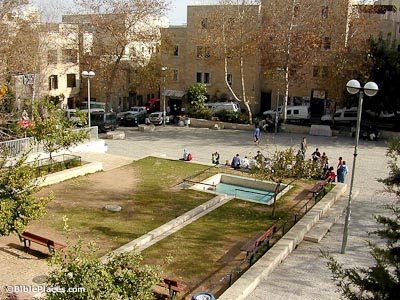 |
Jewish Quarter Plaza
The southeast corner of the Old City, the Jewish Quarter occupies about 15 acres and has been inhabited by Jews for centuries. Following the capture of the Old City by the Arabs in 1948, all Jews were expelled and their buildings destroyed. When Israel regained the Old City in 1967 work began to reconstruct the quarter and today hundreds of people live and study here.
|
Hurvah Synagogue
The most prominent synagogue in the Old City was the Hurvah Synagogue until it was blown up by the Jordanians in the 1948 War of Independence. Because of disagreements the Israelis did not rebuild the synagogue in 1967, instead re-erecting one of the arches in memory of the house of prayer. In 2010 the synagogue was rebuilt and dedicated.
| 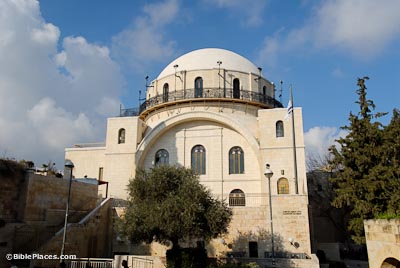 |
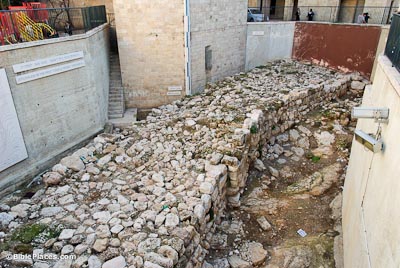 |
The Broad Wall
Reconstruction work following the 1967 war allowed archaeologists to excavate various areas in the Jewish Quarter. One of the most significant finds from the OT period was the Broad Wall. Built by Hezekiah in the days before the 701 B.C. invasion by the Assyrian king Sennacherib, the Broad Wall enclosed the Western Hill and increased the walled area of Jerusalem five-fold.
|
Jewish Ritual Bath
Numerous mikvot were discovered in the excavations of the Jewish Quarter, attesting to the importance of ritual purity for Jews in the first century A.D. Larger mikvot were often divided by a low wall or column to separate those entering the bath from those exiting. Construction and use of these baths was governed by strict Jewish laws.
| 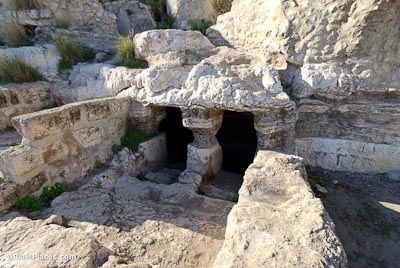 |
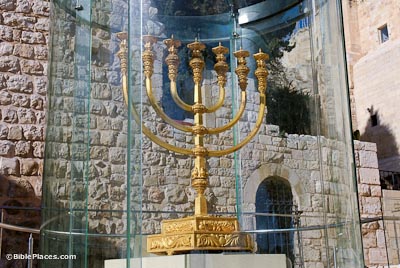 |
Golden Menorah
Constructed by the Temple Institute and based on extensive research, this golden menorah is appropriate for use in the Third Temple. Over two meters in height and plated with 43 kg (95 lbs) of gold, this menorah is the first such constructed since the destruction of the Temple. This menorah is on display in the Jewish Quarter.
|
Related Websites
|
See the Cardo, for related pictures, text and links.
Jewish Quarter, General
Jewish Quarter Jerusalem (myrova.com) Website created by inhabitants of this area, with extensive explanations of the ancient sites and modern activities. A good site to start with for learning about the Jewish Quarter.
The Old City, Jewish Quarter (Frommer's) Describes the history and main sites of the Jewish Quarter, including hours of operation and prices at the time of publication.
The Jewish Quarter (Virtual Israel Experience) Highlights the main features of the newest quarter in the Old City with links to related topics, especially historical.
The Jewish Quarter (Agency for Jewish Education) Includes brief descriptions of modern historical background and location.
Herodian Quarter & Wohl Archaeological Museum Review (Fodors.com) A review of the museums and archaeological sites to be seen in the Jewish quarter.
Archaeological Excavations in the Jewish Quarter of the Old City, Jerusalem (Harvard) Details the undertaking of Avigad's excavations in the old city.
Hezekiah's (Broad) Wall
The Growth of Judean Jerusalem (Israel MFA) Places Hezekiah's Wall into an urban growth context. A classic diagram comparing the size of Jerusalem in various periods is included for reference.
The Broad Wall (The New Jerusalem Mosaic, Hebrew University) A brief description of the wall and the circumstances surrounding its construction. Copy of this page at Jewish Virtual Library.
Hezekiah's (Broad) Wall (Dig the Bible) Presents this wall in the historical context of Sennacherib's attack on Hezekiah's kingdom, bringing Hezekiah's Tunnel and the siege atLachish into the picture.
Broad Wall (BibleWalks.com) Displays several photos of the wall including a map.
Jerusalem (Walking in Their Sandals) Singles out photos of Hezekiah's Wall from the Jerusalem photos section, including the measuring device on site, which indicates the original height of the wall.
The Broad Wall (The Spurgeon Archive) Spurgeon's sermon on the text of Nehemiah 3:8. With the utmost respect for the "prince of preachers," we must conclude that this particular sermon is a good example of how not to preach from the Old Testament.
|

No comments:
Post a Comment